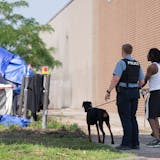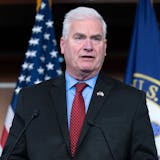Location, location, location. Heather Holm is a horticulturist, not a real-estate agent. But that's her mantra when it comes to choosing plants for her Minnetonka landscape.
She plants only species that are native to her immediate area, taking cues from a woodland at a nearby city park, and consulting old survey documents and other resources.
"If you just buy a plant at a garden center, it's like putting a square plant in a round hole," she said. "My epiphany was understanding that you need to know where a plant originated. What soil? How much sun?"
Section by section, Holm and her husband, Brent, have eliminated almost all of the turf grass on their 2/3-acre lot and replaced it with native trees, shrubs and wildflowers. "We're really aiming for diversity," she said.
By planting almost 200 herbaceous species and 65 to 70 woody species, they've turned their yard into a native arboretum that attracts a wide variety of birds, butterflies and other insects. They've kept a small patch of lawn, for their dog, at the back of the house, but that's it.
"Grass is a bit boring," Brent said. "This is more interesting."
Heather wasn't always such a naturalist. She used to design traditional perennial gardens, for herself and for clients, as a consultant. But she's always loved wildlife, and as she learned more about their dwindling habitat, threatened by development and invasive species, she became increasingly committed to restoring it.
"We gardeners have to contribute," she said. Landscapes that are merely pretty don't give anything back to the ecosystem. "Most birds, their diet is insects," she said. "Native insects are attracted to native plants, and birds eat those insects."

